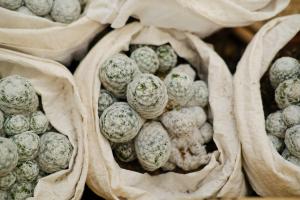Can I Transplant Full Grown Tomato Plants?
Tomatoes are one of the most popular vegetables grown in home gardens. Many gardeners start their tomatoes from seeds indoors and then transplant them outdoors once they are big enough. But what about full grown tomato plants that have been left to grow in the same spot for a while? Can they be transplanted? The answer is yes, but there are some important things to keep in mind.
When to Transplant Full Grown Tomato Plants
The best time to transplant full grown tomato plants is in the early morning or late afternoon, when the temperature is cool and the sun is not too intense. Ideally, the plants should be transplanted on a cloudy day or when there is light rain. This will help reduce the stress on the plants and increase their chances of survival.
It's also important to transplant the tomato plants when they are not in the middle of producing ripe fruit. If you transplant a plant when it has ripe fruit on it, it will likely go into shock and the fruit may not ripen properly.
Preparing for Transplanting
Before you transplant your full grown tomato plants, it's important to prepare them properly. First, make sure that the plants are well-watered a day or two before you plan to transplant them. This will help keep their roots moist during the transplanting process.
Next, choose a new location for your tomato plants that has well-draining soil and receives at least six hours of sunlight per day. Dig a hole that is slightly larger than the plant's root system and add some compost or fertilizer to the bottom of the hole.
Transplanting the Tomato Plants
When it's time to transplant your full grown tomato plants, gently dig them up from their current location, being careful not to damage the roots. Once the plant is free from the ground, wrap the roots in a damp towel or burlap sack to keep them moist during transport.
Place the plant in the new hole, making sure that it is level with the surrounding soil. Fill in the hole with soil and water the plant well. You can also add a layer of mulch around the plant to help retain moisture and control weeds.
Caring for Transplanted Tomato Plants
Once your full grown tomato plants have been transplanted, it's important to keep an eye on them and provide proper care. Water the plants deeply once a week, or more often if they are in a particularly dry location.
If the plants start to wilt or show signs of stress, provide some shade during the hottest part of the day. You can also add some organic fertilizer or compost to the soil around the plant to help it establish itself in its new location.
Conclusion
In conclusion, transplanting full grown tomato plants is definitely possible, but it requires care and preparation. The ideal time to transplant your plants is in the early morning or late afternoon, on a cloudy day or when there is light rain. Make sure to properly prepare the plants, choose a good location, and provide the necessary care after transplanting. With a little bit of effort, you can successfully transplant your full grown tomato plants and enjoy a bountiful harvest.

 how many times do yo...
how many times do yo... how many planted tre...
how many planted tre... how many pine trees ...
how many pine trees ... how many pecan trees...
how many pecan trees... how many plants comp...
how many plants comp... how many plants can ...
how many plants can ... how many plants and ...
how many plants and ... how many pepper plan...
how many pepper plan...




























